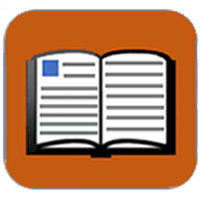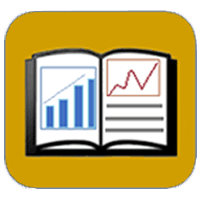Decision Support
View article.
Here, we advance the practice of using satellite-derived maps with four guiding principles designed to increase end user confidence and thereby accessibility of these data for decision-making.
Webinar recordings.
Monday, December 6: Forest and Rangeland Livelihoods
Leveraging demand for renewable energy and innovative bioproducts to facilitate forest restoration, presented by Nate Anderson
What happened to wood products markets in 2020 and 2021 in the United States?, presented by Jeff Prestemon
Managing wolves and livestock on national forests in the West, presented by Susan Charnley
Tuesday, December 7: Protecting Ecosystem Services
Human ecology mapping: Capturing diverse forest benefits and landscape interactions for use in planning and decision-making, presented by Lee Cerveny
What’s a canopy worth? Using i-Tree to understand the value of trees, presented by Alexis Ellis
Agroforestry: Tools for working across the landscape, presented by Gary Bentrup, Kate MacFarland, Matthew Smith, Richard Straight
Wednesday, December 8: Bounty Beneath Our Feet
Why is biochar so important?, presented by Debbie Page-Dumroese
Establishing pollinator habitat in log landings after timber sales begins with restoring the soil, presented by John Kabrick
Soil organic carbon, presented by Andy Coulter and Stephanie Connolly
Thursday, December 9: Urban Interfaces
A shared stewardship approach to wildland fire mitigation in Eastern Oklahoma, presented by Cassandra Johnson Gaither
Urban forestry, presented by Natalie van Doorn
Fire WUI urban communities, presented by Francisco Escobedo
Friday, December 10: Getting Outside
Managing winter recreation and sensitive species on Colorado’s public lands: Do humans and Canada lynx select the same habitat?, presented by Lucretia Olson
Considering the benefits of recreation in program reporting and decision-making, presented by Eric White
Latinix outdoor recreation, presented by Jose Sanchez
View article.
In this study, patterns of wildfire risk were explored from operational relative risk assessments (RRA) completed by land managers on 5087 wildfires from 2010 to 2017 in every geographic area of the USA. The RRA is the formal risk assessment used by land managers to develop strategies on emerging wildfires when concerns and issues related to wildfire management are in real-time. Only 38% of these wildfires were rated as high risk and 28% had high ratings for values at risk. Large regional variations were evident, with the West Coast regions selecting high risk and the South-west and Eastern regions selecting low risk. There were finer-scale influences on perceived risk when summarized on a jurisdictional level. Finally, risk summarized by USA agencies showed that the National Park Service and USDA Forest Service selected high risk less frequently compared with other agencies. By illuminating patterns of risk, this research intends to stimulate examination of the social, cultural, and physiographic factors influencing conceptions of risk.
View article.
The Fireshed Registry is a geospatial dashboard and decision tool built to organize information about wildfire transmission to communities and monitor progress towards risk reduction for communities from management investments. The concept behind the Fireshed Registry is to identify and map the source of risk rather than what is at risk across all lands in the continental United States. While the Fireshed Registry was organized around mapping the source of fire risk to communities, the framework does not preclude the assessment of other resource management priorities and trends such as water, fish and aquatic or wildlife habitat, or recreation. The Fireshed Registry is also a multi-scale decision tool for quantifying, prioritizing, and geospatially displaying wildfire transmission to buildings in adjacent or nearby communities.
Access dashboard.
The RMA Dashboard is a series of tabs to products to help line officers, agency administrators, fire managers, incident management teams, area commands, geographic area coordination centers, and multi-agency coordination groups to make more risk-informed decisions to achieve safer and improved outcomes. These additional analytics are not a replacement for locally-derived and calibrated decision thresholds or procedures as outlined in manual direction (e.g., the WFDSS Decision, Fire Danger Operating Plans). However, it is hoped that these new products can be infused into pre- and post-planning and incident response systems, procedures, and documentation, like the WFDSS Course of Action or Rationale.
Webinar recording.
Fire is an essential component in restoring and maintaining a healthy forest. However, historic land use and decades of fire suppression has excluded fire from millions of forested hectares across much of the western United States, including the Grand Canyon National Park. Forest restoration at the Grand Canyon aims to reduce wildfire vulnerability by applying fire to diversify or remove forest vegetation. However, the cost, complexity, and concerns associated with managing fire for resource benefit requires that fire managers utilize and implement locally-relevant, science-based knowledge to strategically identify when and where to use fire to produce the greatest benefits. This research specifically addresses the National Park Service, Fire Management Leadership Board priority area of: Research that assists in removing stumbling blocks and hurdles for implementing fuels treatments and managing wildfires for resource objectives. We observed fire behavior in the Grand Canyon in conjunction with topographic variation and weather conditions to provide thresholds that affect fire severity and spread that may be beneficial or incompatible with multiple resource objectives. In doing so, we also developed customized tools that can be used to assist with fire management planning and quickly identifying conditions likely to affect fire behavior at Grand Canyon National Park.
Webinar recording.
Ecosystems are transforming under climate change, with substantial shifts in ecological processes and important ecosystem services occurring at unprecedented rates. As systems approach socio-economic and ecological thresholds, our current management toolbox has proved to be incomplete for conservation and the sustainable provision of ecosystem services, including fisheries production and the wildlife habitat. Multiple approaches are therefore needed to address the varying uncertainties we face in this increasingly non-stationary world. Managers navigating ecosystem transformation can benefit from considering broader objectives beyond a traditional focus on resisting ecosystem change, by also considering whether accepting change or directing it along a preferred pathway might be more appropriate (RAD framework).
View article.
Characterising the impacts of wildland fire and fire suppression is critical information for fire management decision-making. Here, we focus on decisions related to the rare larger and longer-duration fire events, where the scope and scale of decision-making can be far broader than initial response efforts, and where determining and demonstrating efficiency of strategies and actions can be particularly troublesome. We organize our review around key decision factors such as context, complexity, alternatives, consequences and uncertainty, and for illustration contrast fire management in Andalusia, Spain, and Montana, USA. Two of the largest knowledge gaps relate to quantifying fire impacts to ecosystem services, and modelling relationships between fire management activities and avoided damages. The relative magnitude of these and other concerns varies with the complexity of the socioecological context in which fire management decisions are made. To conclude our review, we examine topics for future research, including expanded use of the economics toolkit to better characterize the productivity and effectiveness of suppression actions, integration of ecosystem modelling with economic principles, and stronger adoption of risk and decision analysis within fire management decision-making.
View article.
Respondents identified numerous barriers, as well as recommendations for improving decision support systems (DSS) development and integration, specifically with respect to capacity, communication, implementation, question identification, testing, education and training, and policy, guidance, and authorities. These recommendations can inform DSS use for wildfire risk assessment and treatment prioritization to meet the goals of national policies and frameworks. Lastly, a framework for organizing spatial, pre-wildfire planning DSSs to support end-user understanding and use is provided.
This 3-part modeling miniseries takes a wide-ranging look at State-and-Transition-Simulation-Models (STSMs) and use the LANDFIRE BpS models as a launching point for inquiry about ecosystem change over time. It communicates practical ways to use STSM in real-life research, management and academia.
Part 1 Recording: Kori Blankenship (LANDFIRE Fire Ecologist) will discuss the basics of (STSMs), introduce the LANDFIRE BpS models and share resources for both novice and intermediate state-and-transition modelers.
Part 2 Recording: Leonardo Frid (Systems Ecologist at Apex Resource Management Solutions) will showcase real-life STSM applications with the ST-Sim package for SyncroSim, demonstrate how to use both the Graphical User Interface and rsyncrosim R package and discuss different approaches for applying state and transition modeling tools in real-life management scenarios.
Part 3 Recording: Randy Swaty (LANDFIRE Ecologist) & Dr. Priscilla Nyamai (Asst. Professor, Grand Valley State Univ.) will discuss how integrating STSMs in the classroom can be useful for conceptualizing ecosystem changes.





